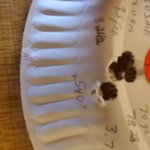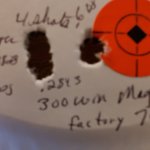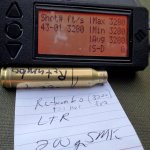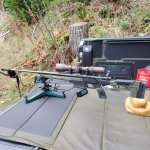Wondering if others out there have worked out a good way to get shot-to-shot consistency with lightweight, heavy recoil hunting rifles.
Here’s the issue. Every training video you’ll find here shows folks getting tiny groups by firing 5 or so shots back-to-back without changing position (cheek stays on the stock, eye on the scope, only movement is working the bolt). I’ve never seen anyone shoot a hunting rifle this way. For one thing, a 7lb rifle with heavy recoil is going to move and need to be re-positioned. For another, a magnum sporter-weight barrel needs 5min or so to cool down between rounds (or at least mine do). If you shot them like Eric cortina, you’d have a burnt-out barrel and a lot of velocity spread from shoving rounds in a red-hot chamber.
I can consistently shoot 1/2 or 1/3 moa groups with little effort when I use “range guns” like 6BR or 6.5 creed’s with heavy barrels. You just stay in position and work the bolt with one finger like everybody does in the training videos. Heck, my $200 factory .22LR with cheap ammo and a crappy low-end vortex scope does 1/2moa 10-shot groups with no problem using this method. Getting good 5-shot groups from my 28 nos or 300wm is another issue. I need to shoot a round, stick in my barrel fan, chat with the guy next to me, then come back in 5 minutes for the next round. Some days, I’ll get a great group. Most of the time, I’ll get one or two outliers that turn my 1/2 moa group into a 1moa pattern. It’s kind of maddening when you’re trying to figure out if your load is off, or if you’re just positioned slightly different then your last shot.
Anybody have real-world experience getting consistently when you’re walking away from your rifle between rounds?
Here’s the issue. Every training video you’ll find here shows folks getting tiny groups by firing 5 or so shots back-to-back without changing position (cheek stays on the stock, eye on the scope, only movement is working the bolt). I’ve never seen anyone shoot a hunting rifle this way. For one thing, a 7lb rifle with heavy recoil is going to move and need to be re-positioned. For another, a magnum sporter-weight barrel needs 5min or so to cool down between rounds (or at least mine do). If you shot them like Eric cortina, you’d have a burnt-out barrel and a lot of velocity spread from shoving rounds in a red-hot chamber.
I can consistently shoot 1/2 or 1/3 moa groups with little effort when I use “range guns” like 6BR or 6.5 creed’s with heavy barrels. You just stay in position and work the bolt with one finger like everybody does in the training videos. Heck, my $200 factory .22LR with cheap ammo and a crappy low-end vortex scope does 1/2moa 10-shot groups with no problem using this method. Getting good 5-shot groups from my 28 nos or 300wm is another issue. I need to shoot a round, stick in my barrel fan, chat with the guy next to me, then come back in 5 minutes for the next round. Some days, I’ll get a great group. Most of the time, I’ll get one or two outliers that turn my 1/2 moa group into a 1moa pattern. It’s kind of maddening when you’re trying to figure out if your load is off, or if you’re just positioned slightly different then your last shot.
Anybody have real-world experience getting consistently when you’re walking away from your rifle between rounds?





